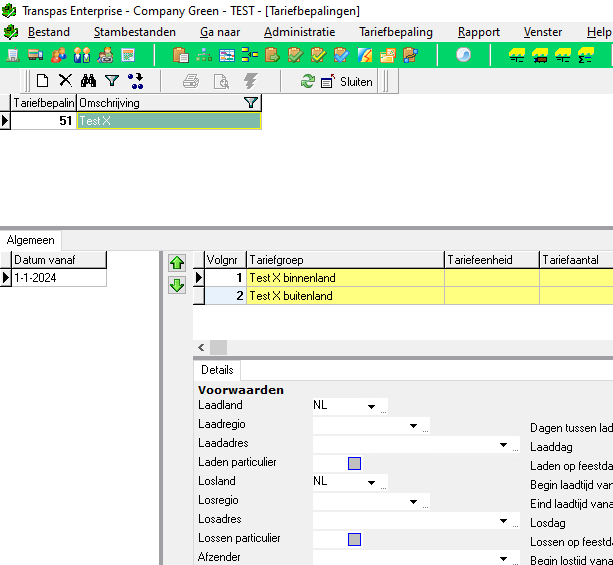Only one tariff group can be linked per financial relationship.
It is possible that multiple tariff groups are used for a financial relationship: for example, different tariff groups are used for domestic and foreign freight.
The tariff ruleset was devised for this purpose.
The tariff ruleset can be used to set the date from which the ruleset applies.
A tariff group is assigned to the order based on the conditions set in the tariff ruleset (such as tariff unit, loading country and plan group).
Open the Tariff determinations screen via
- Main files -> Tariffs -> Tariff ruleset
or - F11 -> Tariff ruleset

-
A new tariff ruleset can be entered at the top. For example, the name of the customer is useful as a description.
-
On the left, you can enter the date from which the tariff ruleset should apply.
-
On the right, you can fill in the tariff groups and the conditions that the ruleset must meet.
¶ Example
There is a tariff group for customer X for orders within the Netherlands (tariff group X binnenland).
In addition, there is a tariff group for all journeys outside the Netherlands for the same company (tariff group X buitenland).
In this case, 2 tariff groups apply to the financial relationship.
Create a description (customer X) and fill in the from date.
On the right, fill in test X binnenland as tariff group and specify the conditions that the loading country and the unloading country must be the Netherlands.
Create a line below that with tariff group test X buitenland, which you do not specify any conditions for.
The tariff ruleset works from top to bottom. First, it is checked whether the conditions of the 1st line are met. If not, it continues to the next line.
See also: